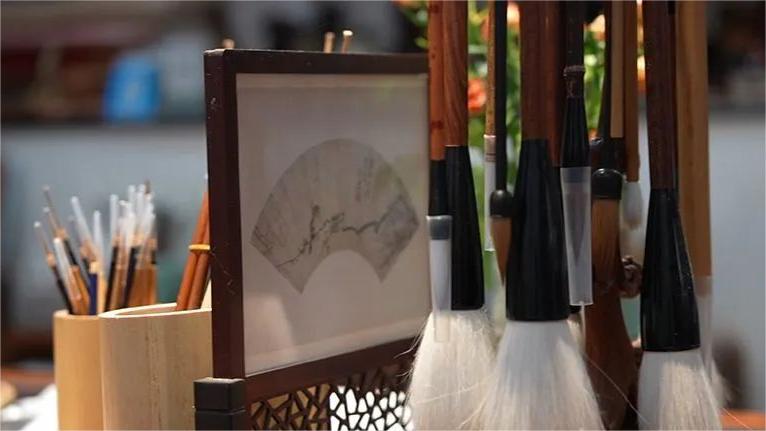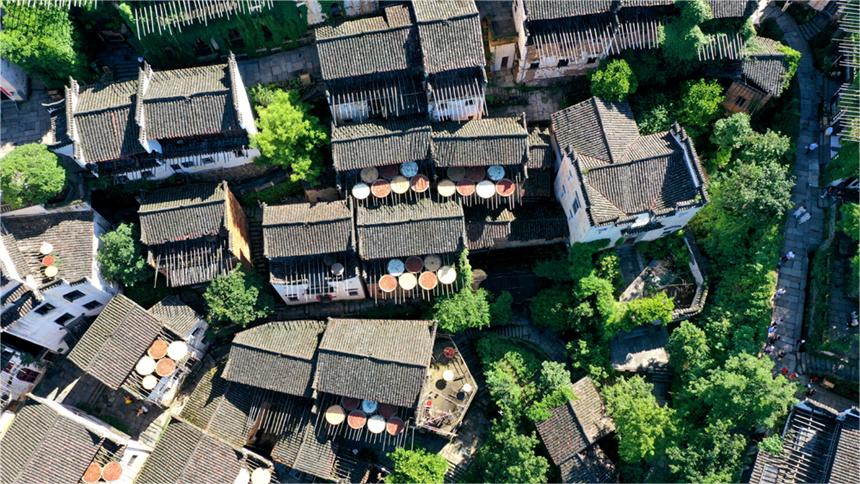Lujin enchants international journalists, influencers in Shandong
Lujin, or Lu Brocade, is a hand-woven brocade with pure cotton popular in southwest Shandong province that traces back to the Spring and Autumn Period (770-476 BC).
A group of foreign journalists and influencers based in China visited the Museum of Lu Brocade located in Jiaxiang county of Jining city in East China's Shandong province on Tuesday to explore and experience the techniques associated with the ancient fabric, which was recognized as a national-level intangible cultural heritage in 2008.
Under the guidance of Hao Qiuxia, a local lujin inheritor who founded the museum in 2015 - in which the building used to be her family's ancestral house - media guests tried their hand at turning cotton into yarn on the spinning wheel and weaving lujin fabric on the loom. They also learned to make pankou (traditional Chinese knot buttons) and health-preserving hammer containing medicinal herbs at the museum's intangible cultural heritage workshop.
"I really enjoyed these hands-on activities, which gave me a deeper understanding of Chinese history and culture. These experiences showcased the exquisite craftsmanship and allowed me to appreciate the wisdom and creativity of the ancients. It was truly an unforgettable experience," said Mohammad Hashem Mohammadi, an Afghanistan content creator based in Shanghai.
"I find lujin absolutely fascinating. The intricate designs and vibrant colors are stunning, and the skill required to produce such beautiful textiles is impressive," he said, adding that there are traditional textiles like Afghan carpets and embroideries in his country, which also involve intricate designs and skilled craftsmanship.
"Lujin feels close to me. It looks plain but feels very comfortable," said Shanghai-based American vlogger Lile Song Mahoney, dressed in a hanfu made of lujin. Mahoney, who is also a second-year student majoring in Chinese Language and Literature at East China Normal University, has a fascination with traditional Chinese clothing and costumes of various ethnic groups in China.
"Recent years have witnessed a hanfu frenzy on social media, but the popular hanfu styles are mostly those from the wardrobe of the noble and well-to-do families in ancient China," Mahoney noted. "I have been curious about what hanfu that common people wore in the past. Lujin-made hanfu is probably the answer and it looks very charming."
According to Hao, lujin became a daily necessity for commoners with the introduction of herbaceous cotton into the Central Plains of China since after the Eastern Han Dynasty (25-220).
One of the five most famous brocades in China (the others are yunjin from Nanjing in Jiangsu province, shujin from Sichuan province, songjin from Suzhou in Jiangsu province and zhuangjin from the Guangxi Zhuang autonomous region), lujin is the only brocade made of cotton while the others of silk.
A total of 72 processes are involved in making lujin and ancient artisans could weave more than 1900 different patterns with 22 basic colors. Auspicious motifs from daily life, and ancient totems are used as lujin patterns, Hao introduced.
Hao's museum also offers hands-on courses on techniques associated with lujin-weaving and hanfu-making, which are popular among students and people enthusiastic about traditional Chinese cultural heritage, said the inheritor.
Photos
Related Stories
- Chinese bond turns into family affair
- Xizang Campus Diary-Episode 3: Dream: Rising from the Plateau
- French baker finds love, home in Zhuhai
- A Chinese love story with a foreign twist
- China to make it easier for foreigners to work, study, travel: top legislator
- Remote prefecture educates itself on ways to prosperity
Copyright © 2024 People's Daily Online. All Rights Reserved.









